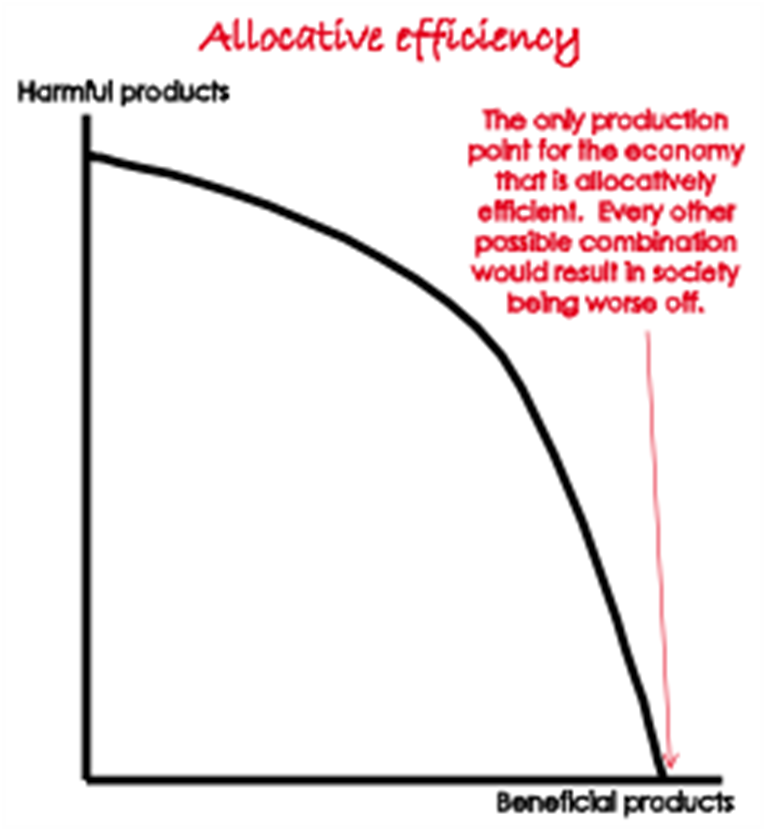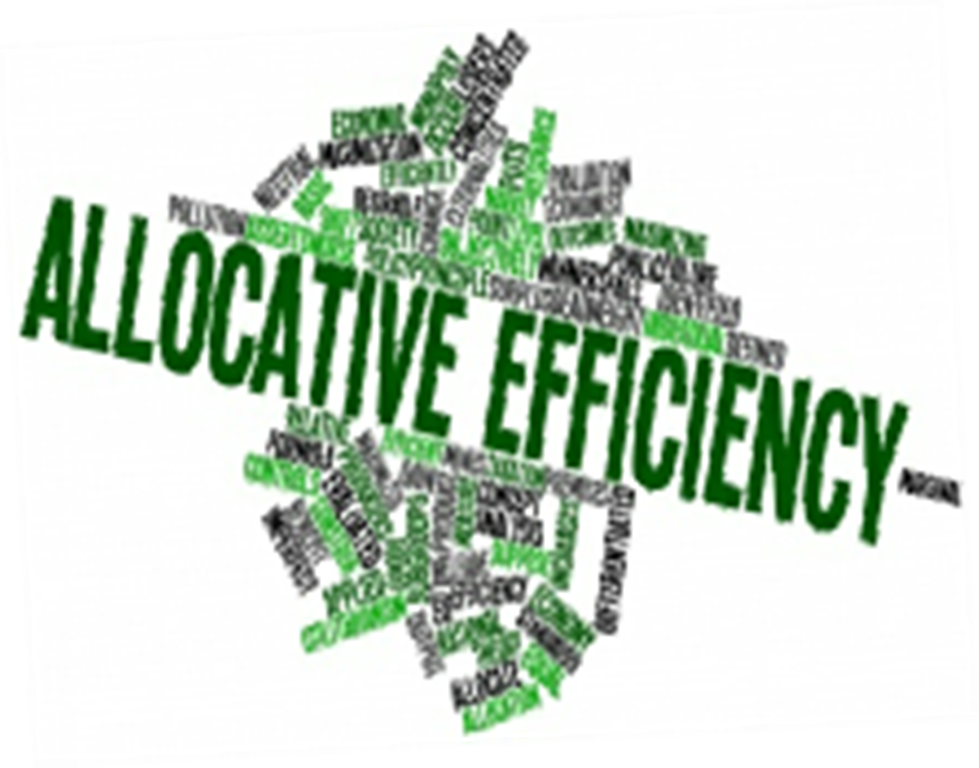Allocative efficiency represents the most efficient allocation of scarce resources for an economy in the sense that, for any combination of scarce resources, the production of goods and services that occurs is most valued by society. It results in a combination of goods and services being produced that maximises national welfare/living standards. In other words, the most efficient allocation of resources occurs when it is impossible to increase production and living standards by changing the way resources are allocated. The most efficient allocation of resources can also be described as an allocation that is pareto efficient in the sense that a move away from this position would result in society becoming worse off.
If our resources are re-allocated such that production in the economy expands, does this mean that there will be an increase or improvement in allocative efficiency?
Usually, an increase in production, ceteris paribus (other things being equal), will mean that allocative efficiency has improved. However, if the increase in production has occurred for goods or services that are not in the nation’s collective best interests (e.g. harmful products like illicit drugs), then allocative efficiency has fallen in the economy even though the volume of production has increased. This is why it is important to examine the effect on national living standards or welfare (or value to society) when determining whether an economy has achieved the most efficient use of its resources. A narrow focus on the volume or real value of production from one period to the next can be misleading.
The PPC below is used to illustrate the concept of allocative efficiency, where for simplicity we assume that an economy can choose between the production of harmful goods (like high powered weapons or illicit drugs) and beneficial products (like health care and education). Despite all points of production being technically efficient, there is only one combination that is in the national best interest. This is the point where the PPC intersects with the horizontal axis – no resources are allocated to the production of harmful products and all resources are allocated to the production of beneficial products. Accordingly, if the economy produced at any other point on the PPC (i.e. it allocated some resources to the production of things like illicit drugs) then the nation’s welfare or living standards would decline. This is despite every other point the PPC being technically efficient.

In reality, most nations (including Australia) produce an abundance of goods and services that are generally considered to be ‘harmful’. Similarly, nations fail to produce (or under-produce) a host of other goods and services that are actually good for us. This tells us that we have an inefficient allocation of resources and there is a role for government intervention. Government policies will not only be developed to address the misallocation of resources (or market failures) that naturally occur in market capitalist economies, but also to boost ‘efficiency’ levels within our markets and industries such that we are increasingly better at using our resources to produce goods and services.
The most efficient allocation of resources necessarily implies the maximum levels or amounts for all types of efficiency measures in an economy, including technical (productive) efficiency, intertermporal and dynamic efficiency- each of which are covered on the next three pages.
Course notes quick navigation
1 Introductory concepts 2 Market mechanism 3 Elasticities 4 Market structures 5 Market failures 6 Macro economic activity/eco growth 7 Inflation 8 Employment & unemployment 9 External Stability 10 Income distribution 11.Factors affecting economy 12 Fiscal/Budgetary policy 13 Monetary Policy 14 Aggregate Supply Policies 15 The Policy Mix


